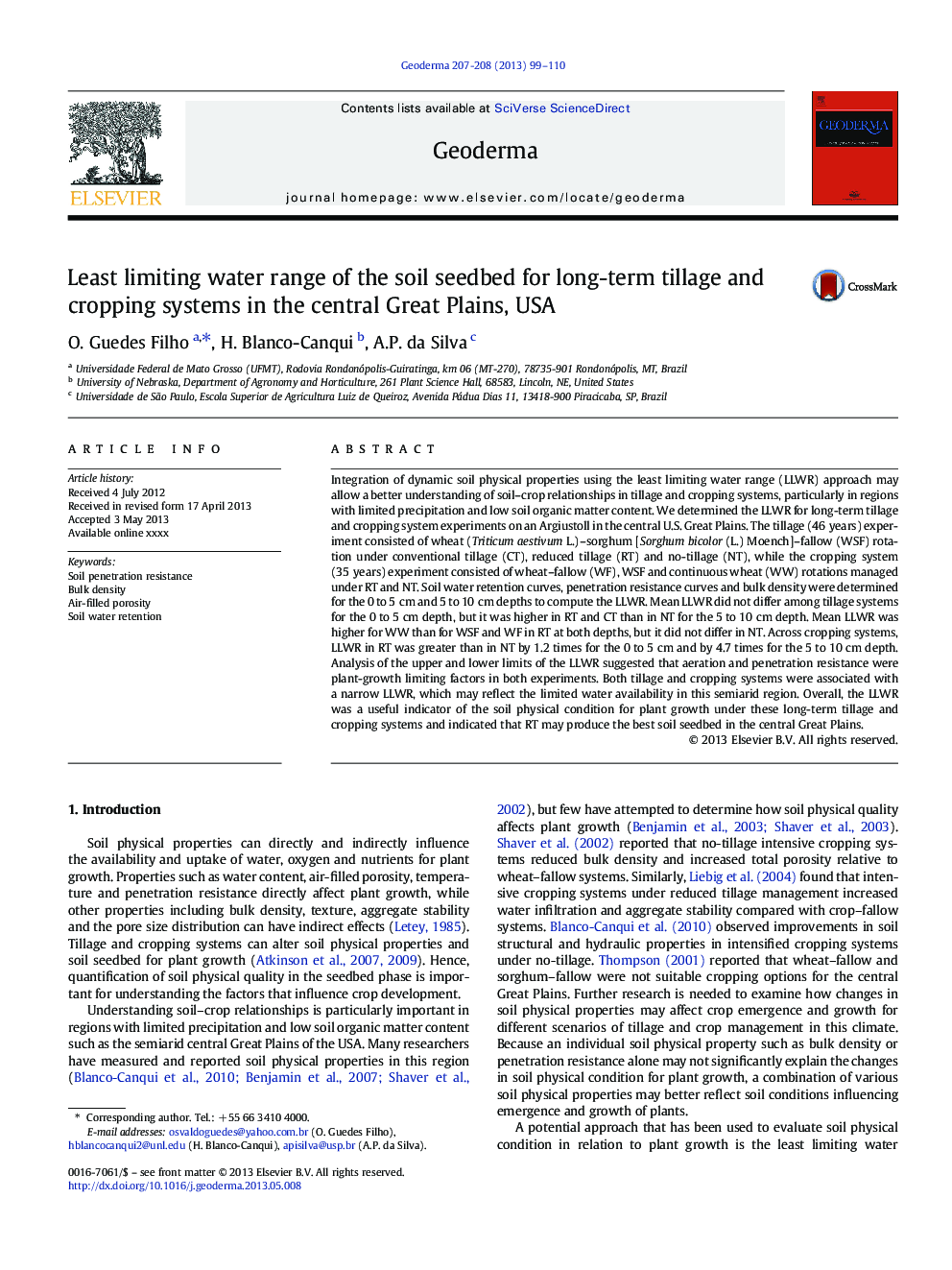| کد مقاله | کد نشریه | سال انتشار | مقاله انگلیسی | نسخه تمام متن |
|---|---|---|---|---|
| 6409156 | 1629482 | 2013 | 12 صفحه PDF | دانلود رایگان |
عنوان انگلیسی مقاله ISI
Least limiting water range of the soil seedbed for long-term tillage and cropping systems in the central Great Plains, USA
دانلود مقاله + سفارش ترجمه
دانلود مقاله ISI انگلیسی
رایگان برای ایرانیان
کلمات کلیدی
موضوعات مرتبط
مهندسی و علوم پایه
علوم زمین و سیارات
فرآیندهای سطح زمین
پیش نمایش صفحه اول مقاله

چکیده انگلیسی
Integration of dynamic soil physical properties using the least limiting water range (LLWR) approach may allow a better understanding of soil-crop relationships in tillage and cropping systems, particularly in regions with limited precipitation and low soil organic matter content. We determined the LLWR for long-term tillage and cropping system experiments on an Argiustoll in the central U.S. Great Plains. The tillage (46Â years) experiment consisted of wheat (Triticum aestivum L.)-sorghum [Sorghum bicolor (L.) Moench]-fallow (WSF) rotation under conventional tillage (CT), reduced tillage (RT) and no-tillage (NT), while the cropping system (35Â years) experiment consisted of wheat-fallow (WF), WSF and continuous wheat (WW) rotations managed under RT and NT. Soil water retention curves, penetration resistance curves and bulk density were determined for the 0 to 5Â cm and 5 to 10Â cm depths to compute the LLWR. Mean LLWR did not differ among tillage systems for the 0 to 5Â cm depth, but it was higher in RT and CT than in NT for the 5 to 10Â cm depth. Mean LLWR was higher for WW than for WSF and WF in RT at both depths, but it did not differ in NT. Across cropping systems, LLWR in RT was greater than in NT by 1.2 times for the 0 to 5Â cm and by 4.7 times for the 5 to 10Â cm depth. Analysis of the upper and lower limits of the LLWR suggested that aeration and penetration resistance were plant-growth limiting factors in both experiments. Both tillage and cropping systems were associated with a narrow LLWR, which may reflect the limited water availability in this semiarid region. Overall, the LLWR was a useful indicator of the soil physical condition for plant growth under these long-term tillage and cropping systems and indicated that RT may produce the best soil seedbed in the central Great Plains.
ناشر
Database: Elsevier - ScienceDirect (ساینس دایرکت)
Journal: Geoderma - Volumes 207â208, October 2013, Pages 99-110
Journal: Geoderma - Volumes 207â208, October 2013, Pages 99-110
نویسندگان
O. Guedes Filho, H. Blanco-Canqui, A.P. da Silva,